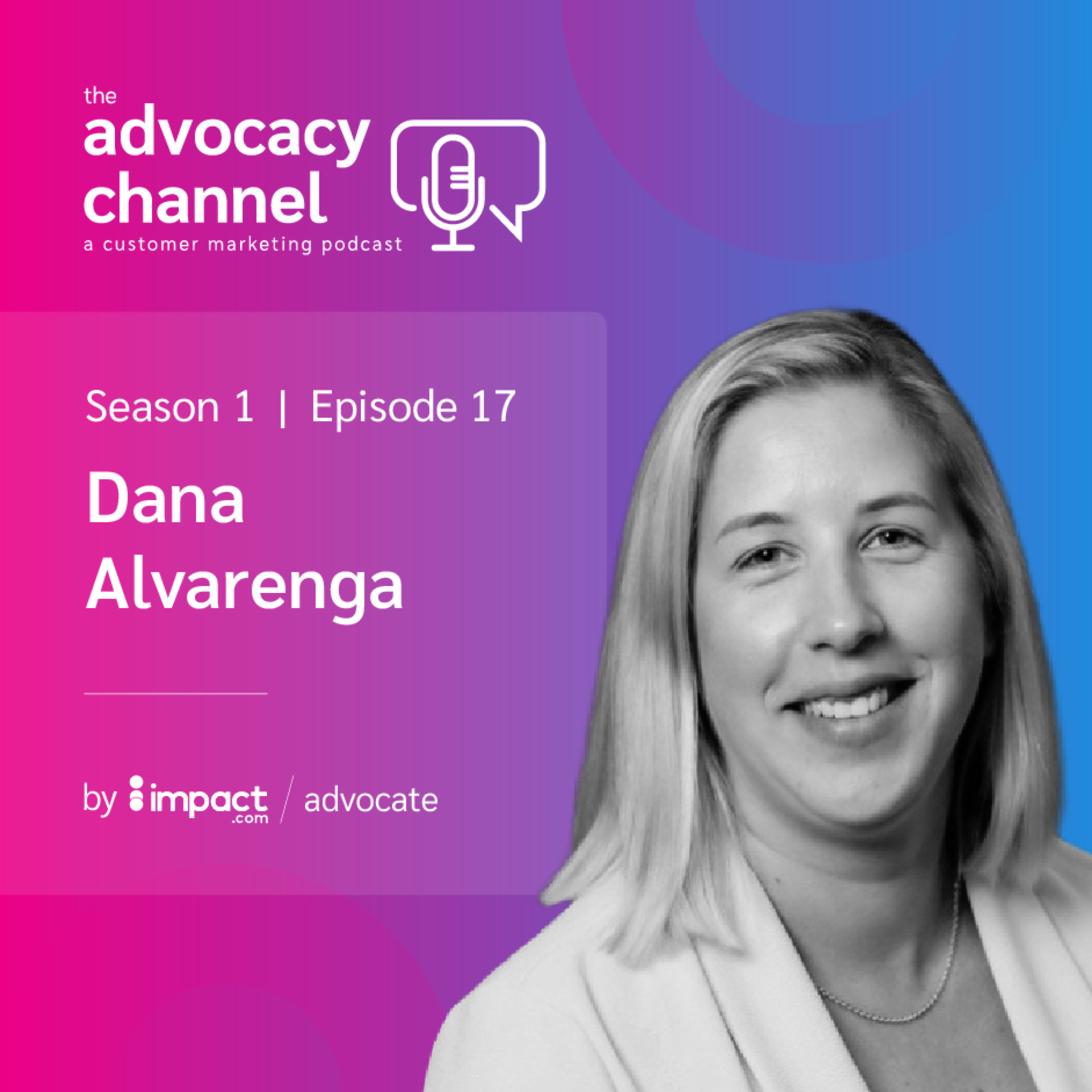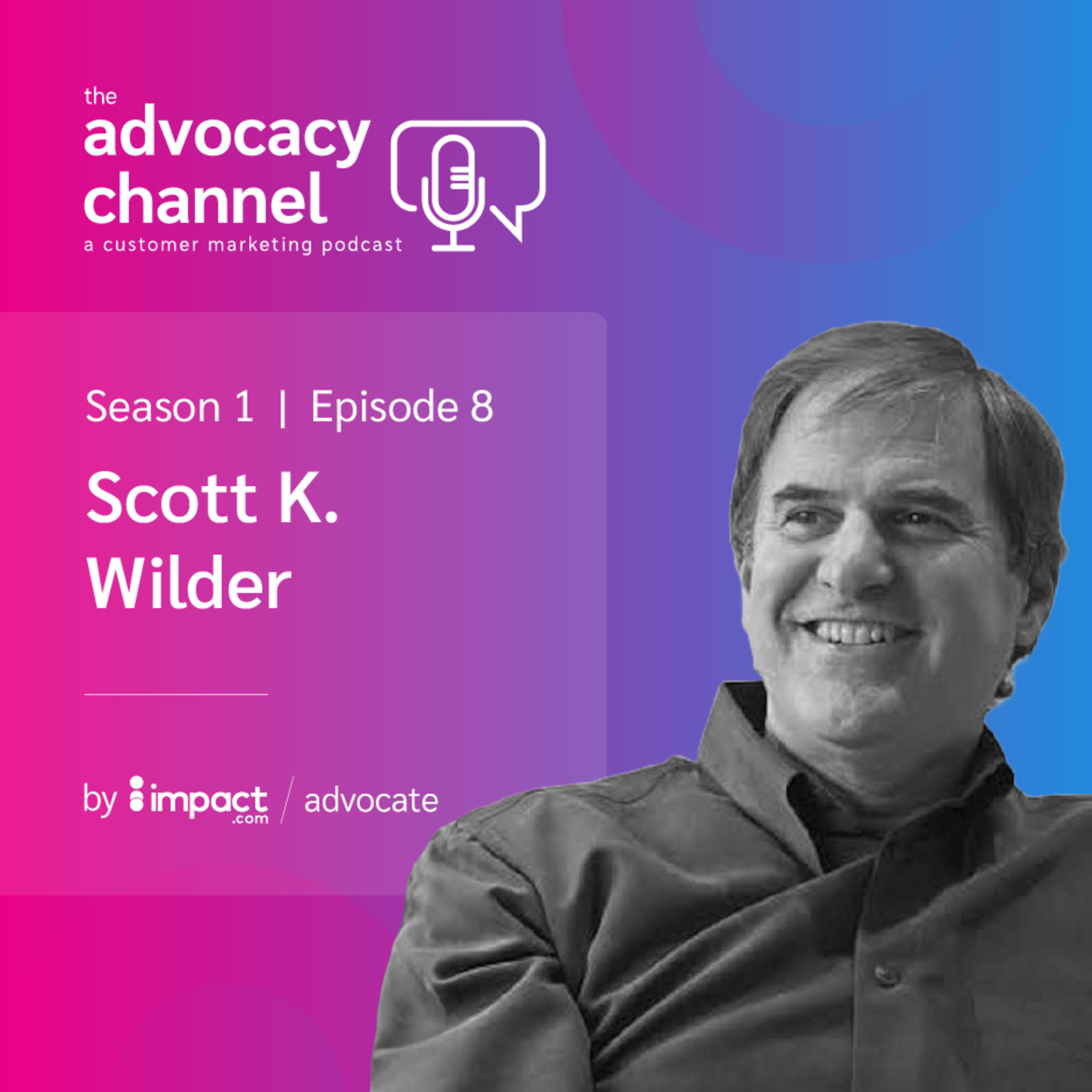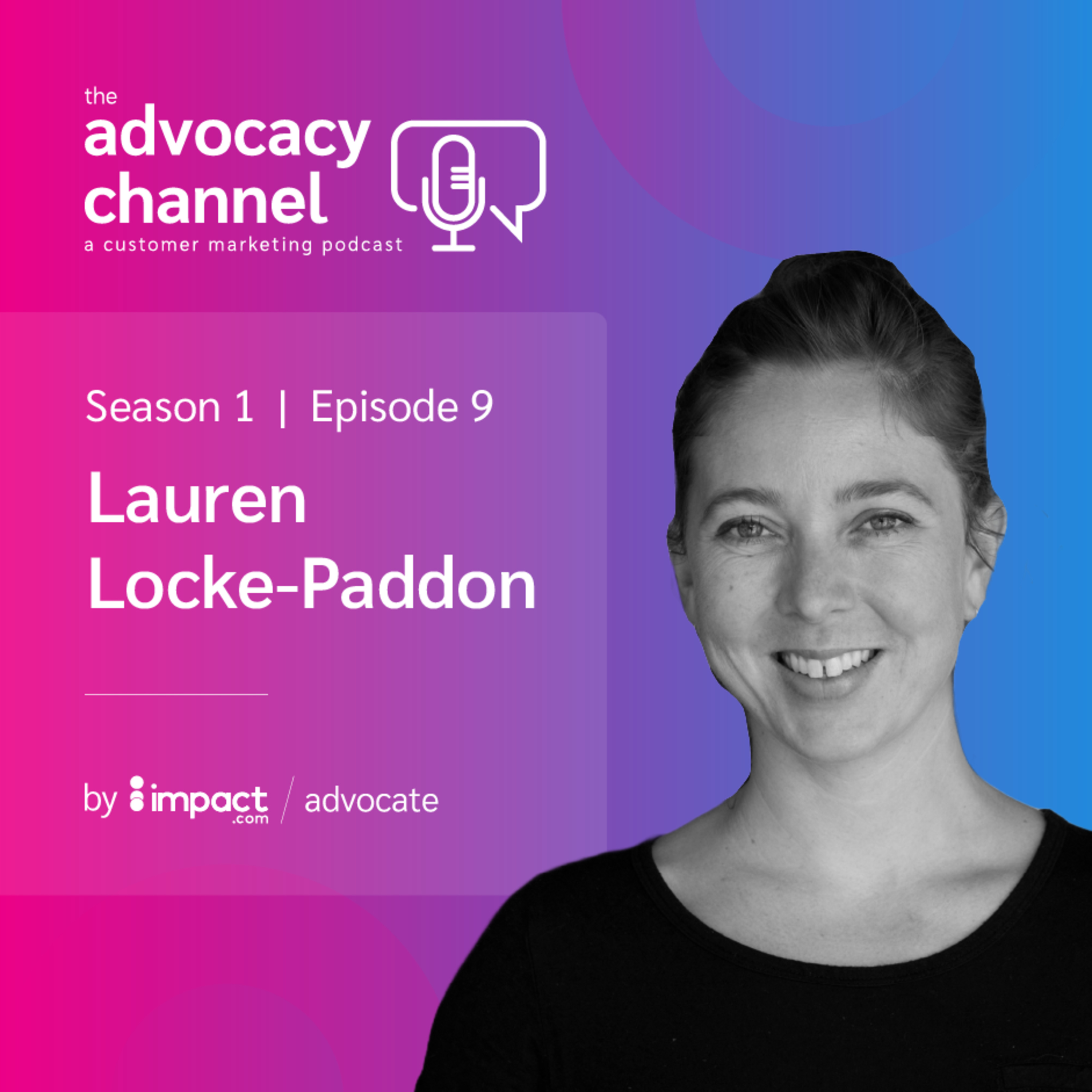Episode Transcript
Will: Hello and welcome to another episode of the Advocacy Channel, a customer marketing podcast. I'm your host, Will Fraser and this is our fifth episode today. I'm thrilled to have John Ashley join us on the show. John has over 20 years of experience developing customer advocacy programs for large companies in the UK and today we'll be chatting about how to get company buy in for your customer advocacy program. Hey John, thank you very much for joining us today.
John: Hey, how you doing, Will?
Will: I'm doing wonderful, I'm doing wonderful. It's another great day here on the west coast and I'm really excited to be talking to you all the way from the UK. I feel like we're in the space age here.
John: Definitely, definitely. Yeah. It's the power of being at home and talking over the Internet.
Will: Right, right. It's an amazing thing that's become so doable. So very glad to have you here today. You know, as we jump into this, there's a question I wanted to start with and it's a question that I think is both simple and amazingly complex and one that sometimes people just gloss over. And so I just want to get in your opinion, what is a customer advocacy program?
John: That's a big question. The simplest way to describe it is to think about where it's come from. Advocacy really started in the B2C market, very much consumer driven whereby grocers, shops, retail stores are all trying to garner loyalty with their customers. They do that through different tactics like two for one offers and promotional activities. In the last 10 years, you've seen a massive uptake in loyalty cards or store cards or points-based systems. In the business to business world it's slightly different because you can't just start throwing points and money at business users. But business users are starting to demand much more of an emotional engagement with the brand.
Will: One of things you said that really resonates with me is this idea of fostering relationships. I feel like a lot of brands go with this idea of close and then advocate and they miss this middle period. Obviously with an end goal of increasing brand loyalty and driving referrals, recommendations, advocacies for the brand. But that fostering relationship part can be easily missed.
John: Definitely. No company or business has the right to assume that a customer is going to advocate for you. That has to be earned. We always talk about how some businesses are slick up to the point of sale. The whole process is positive and the customer is taken on a journey. They get to that point of sale and buy the product and nothing happens. Then you get that creeping of buyers remorse. Have I made the right decision? This is where two things can happen. If you don't get to that customer and carry on that positive journey, they'll start to feel they've just been used to close a deal.
Will: You made a mention there, which I think is very true, which is that most organizations naturally lean towards acquisition. We refer to it as the acquisition addiction. For whatever reason, whether it's shareholders or just a shiny thing to chase. How do I get my acquisition addicted company to support and believe in advocacy?
John: That's a really good question. I've been asked that by quite a few different businesses. There's a big company in the UK who I met with last week, and they just wanted to understand how to position advocacy. Someone's running around saying we need an advocacy program but doesn't know what it is. First, don't confuse advocacy with just pure selling. There's indirect benefits and direct benefits from an advocacy program. Sometimes marketing gets a rough ride because advocacy sits in marketing, although I would say it's a hybrid responsibility.
If you've got a customer success team, you're already halfway there. As an advocacy person, you have to wear every single hat in that business because you need to have a customer obsessed culture. Whatever the customer does, they walk on water. They've spent money with us, invested in our company. Let's not be under any illusion they could walk away.
Will: And when you're trying to make that argument to each of these departments or that business case that touches all of them, where are you most likely to find your allies?
John: Marketing is definitely your primary. They're going to be your main sponsor because advocacy typically sits in marketing. What you end up doing in advocacy is very much marketing driven. What can I get directly from an advocacy program? I can get revenue protection, new leads, cross sell and upsell opportunities. The indirect stuff that's more difficult to measure is sentiment, voice, market share, what people think about my brand, where do I sit in terms of category leadership.
When you're talking to sales, they're interested in the direct piece. When you're talking to marketing, they're interested in both direct and indirect. Customer success wants to know a bit of both. If you're talking to your CEO and top level C guys, they want to know what impact you're going to deliver.
Will: Now you're talking about these benchmarks or impact areas. If you're in a company that isn't measuring NPS, would you suggest someone first tries to get that benchmark measure in place?
John: A couple of organizations I've worked with might not use the NPS scale. They might use quarterly business reviews where they're scoring the customer based on how they're feeling. NPS is simple - it just asks would you recommend us to someone else? If the customer says no, you've got a problem and need to find out why. Every company will have some form of sentiment measurement somewhere. The great thing about an advocacy program is you can take responsibility for that measurement. You're starting at ground zero.
Will: Someone has got buy in, they've got support from the executive team to launch this advocacy program. Any tips for someone who's just starting out?
John: Firstly, under promise, over deliver. You can sometimes want to over egg your advocacy program because you're so excited, but sometimes you just got to rein that enthusiasm back. Don't set your program up to fail. My advice is you just grow. Relationships don't happen on day one. They take time to foster and nurture. If you think you're going to have 5,000 customers on day one all doing stuff for you, you're going to be disheartened.
Will: I'm very happy that you're saying this. Lots of people we have spoken to are operating on timelines where maybe they haven't got enough support to get to year one or year two. And they're supposed to basically produce massive results in three months to prove that with the right resources, it could produce results.
John: If you were absolutely laser focused on just one thing within your advocacy program, potentially you could get results pretty swiftly, but you would have to be 100% laser focused. The challenge is your program then becomes that one hit wonder. Everyone just thinks your program is about doing that one thing, for example driving reviews. And that's the danger because people become fixated on that one thing. Advocacy programs don't just cover one thing.
Will: You mentioned in there that it takes time. If I was going to my executive saying I want to run this advocacy program, how long of a window am I asking for to make sure I can show efficacy?
John: When I put advocacy programs in, you have to think about your end game. An advocacy program doesn't have an end - it's always on. Once you switch it on, it's incredibly difficult to switch off. Your first year is going to be building, experimenting, testing things out, seeing how customers react, building intelligence around your customer base. After a year, you'll be heading for more maturity.
I would say it's a three year journey to get to any semblance of a program that's really generating serious results. I would never say after three months your program is going to be humming. You will get things from day one - a customer leaves a review, yay! But think about it from your perspective - if you've been invited to join this program, you go in, look around, and might not be sure. It's up to the advocacy program manager to keep nurturing, communicating, bringing them back.
Will: You see, I'm very happy you're saying this. It's not "build it and they will come." It's a continual remarketing effort. How do we tell people what's going on? How do we give them new reasons to come back?
John: And I think that's why a lot of businesses today are starting to say we need someone to oversee this, to make sure when we're asking advocates to do things, it's on their terms, not ours. Your customers are in control of what they want to do. But communication and getting customers to do these things is down to the advocacy team, and it's also responsibility for everyone else in the organization. Advocacy doesn't stop with the advocacy team.
Will: No, that makes sense. You gotta have those reps out there talking to people, success teams talking to people and everyone aligned.
John: And also it can be a competitive differentiator. Let's not forget that an advocacy program, if you put it up as a desirable club - how many times have you walked past a club with music and lights and thought "can I go in?" But you have to be a member. Create desire. Everyone hates being on the outside. Everyone loves being on the inside and getting special treatment.
Will: I think it was Marketo that did it, where if you reached a certain level, you received a pair of Marketo branded sneakers. And people would go to Marketo conferences proudly wearing their kicks. We all love to be part of a club, even when that club is connecting us to a company.
John: Absolutely. If someone I know is part of a club, I want to know everything there is to know about it and why I can't be a member. It might not be right for me, but I still want to be a member.
Will: I'd love to learn about your journey into advocacy marketing and any tips you might have for someone looking to enter this space.
John: I've seen so many wonderful people who are now in customer advocacy, and I'm thrilled to see it become such a major part of business thinking. If you're looking for traits - if you're a little bit eccentric, a little bit fun, you've got a background in sales or marketing. I've taken on people with no advocacy experience, but they've shown flair and enthusiasm. If they say "I love customers, customers are the best" - I'm like, sold, you're in. This is a people person role. Forget that they're a CTO or CEO - they're just normal people. Treat them with respect and in a friendly way.
Will: Absolutely. I love that view of it - customer obsessed, fun, a little bit eccentric. These are great traits to be looking for. One last question - when you started in advocacy marketing, what's the one piece of advice you wish someone had given you?
John: Oh goodness, that's a tough question. When I first started, people would look at me very glossy eyed when I talked about advocacy. Everyone was doing advocacy but in isolation, in pockets. There was never a formalized strategy or program. The one piece of advice I'd give every advocate marketer starting this journey is to be focused on what the program is there to deliver. It's not just one thing, and it's difficult to communicate that to people who think advocacy marketing is just case studies.
We don't say to customers "you're in an advocacy program." At Sage it was Sage Champions, at another company it's VIP. Whatever they want to call it. But it's about making sure those customers know they are the best of the best, the cream of the crop, and that you want to make them feel special.
Will: I think that's a great way to end our conversation - making sure we make those customers feel special. Before we go, is there anywhere our listeners could find you if they wanted to connect?
John: I'd say probably the easiest place is LinkedIn. So I'm John - J O N and then Ashley - A S H L E Y. I believe there's one other John Ashley on LinkedIn. Bizarrely, I didn't think there would be. I think he plays the guitar. I can't play the guitar, so that's not me.
Will: I like that - John Ashley on LinkedIn that doesn't play the guitar.
John: Correct.
Will: Wonderful. Well, thank you very much again, John. I look forward to talking to you again soon.
John: Excellent. Thanks, Will.


